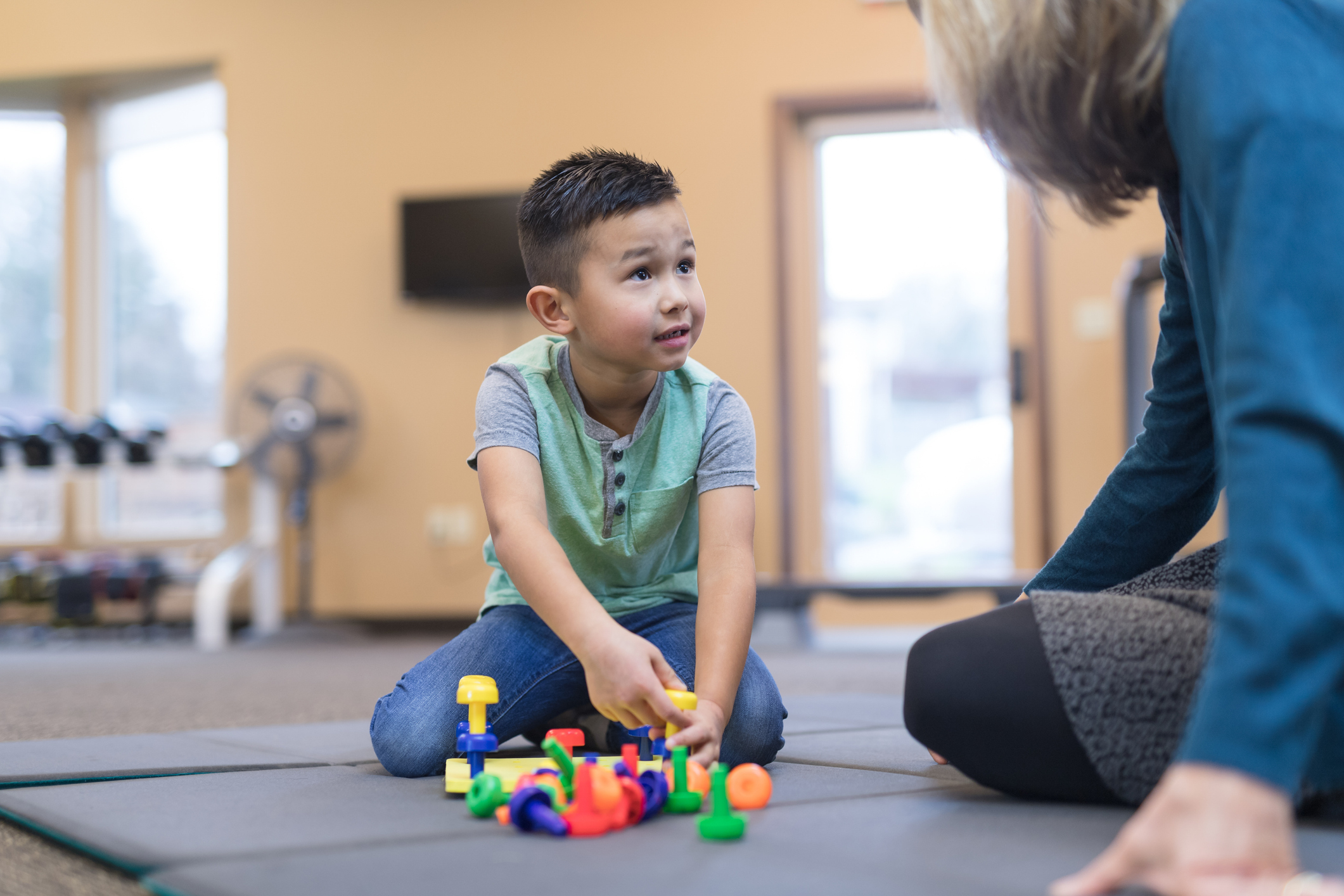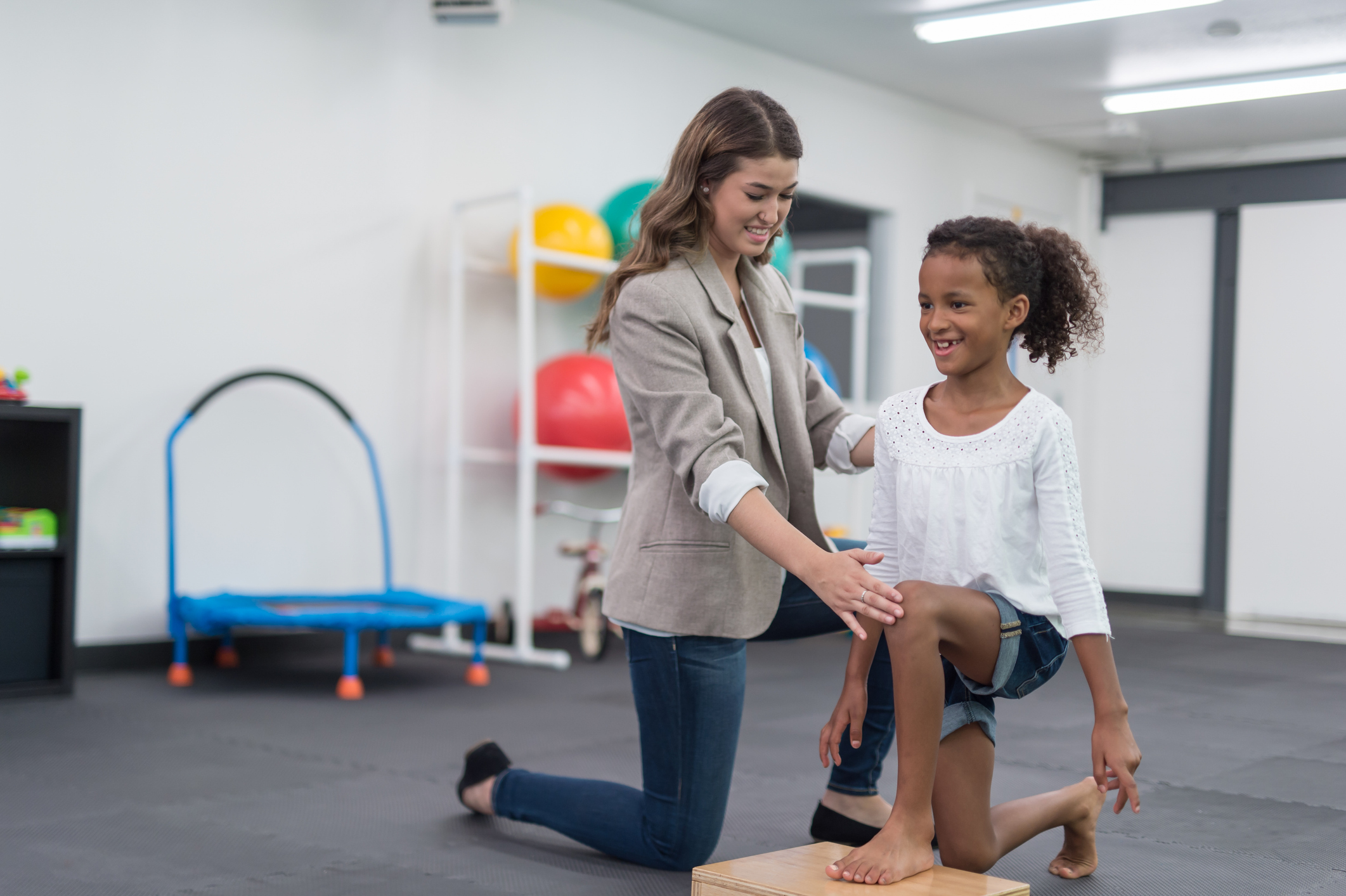Pediatric Rehabilitation
In the pediatric population, physical and occupational therapists use purposeful play in the evaluation and treatment of each child. Skills are learned and mastered through the context of therapeutic play in hopes of enhancing the performance of functional and purposeful activities. This approach addresses the child’s physical, social, and emotional needs.
Following the child’s lead, a therapist will create a fun and empowering treatment session. Developmental skills are emphasized allowing for progress toward age-appropriate activities and movement patterns. Family participation is encouraged for successful implementation and carry over into the home environment.
Most physical and occupational therapy clinics can accommodate children 8 years and older for sports/ physical rehabilitation, but some clinics offer specialized services for children starting in infancy. In all cases, it is imperative that a close relationship develops between the parents, pediatrician, and therapist.
Common Pediatric Conditions Treated*
*Not available at all locations
- Balance and coordination difficulties
- Developmental delays
- General orthopedic injuries
- Gross motor skill deficits
- Headaches
- Joint pain
- Juvenile Rheumatoid Arthritis
- Limitations of range of motion and strength
- Low back pain or poor posture
- Post-concussion Recovery
- Post fracture care
- Scoliosis
- Sports-related pain or injury rehab
- Sprains/Strains
- Toe Walking
- Torticollis
Common Pediatric Rehabilitation Services
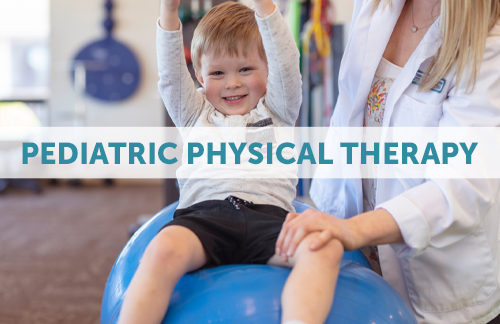
Pediatric Physical Therapy
Expand For More Info
Pediatric Physical Therapy helps infants through teens improve physical and functional deficits.
Physical therapists create individualized treatment plans that include therapeutic exercises, balance, coordination, gait training, agility training, and family education, which are developmentally appropriate to achieve goals.
Common Pediatric Physical Therapy Conditions
- Balance and coordination
- Cerebral Palsy
- Development delays
- Gait disorder (toe walking)
- Gross motor delays
- Incontinence/ Pelvic floor dysfunction
- Juvenile Rheumatoid Arthritis
- Orthopedic injuries
- Osgood-Schlatters disease (OSD)
- Scoliosis & back pain
- Severs
- Sports injuries
- Torticollis
- Toe walking
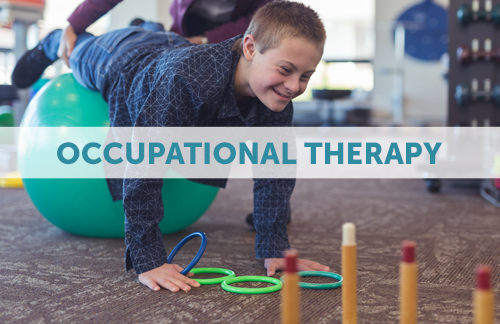
Pediatric Occupational Therapy
Expand For More Info
Pediatric Occupational Therapy focuses on the ways children functionally participate in daily activities and any barriers that may be present in their life that make those activities challenging.
Occupational therapists create treatment sessions to help provide the just-right challenge for each child helping them meet their goals while promoting independence in play, school, and daily activities.
Any child who is not independent with daily life activities (ADL’s). Children with developmental delays, trauma, birth injuries, autism, sensory processing disorders, muscular dystrophy, cerebral palsy, spina bifida, or a failure to thrive can benefit from a pediatric occupational therapy program.
Learned Occupational Therapy Skills Include:
- Self-care
- Social interactions
- Fine motor skills
- Handwriting
- Sensory integration
- Over/Under responsiveness
- Coordination, sequencing, and planning
- Functional strengthening
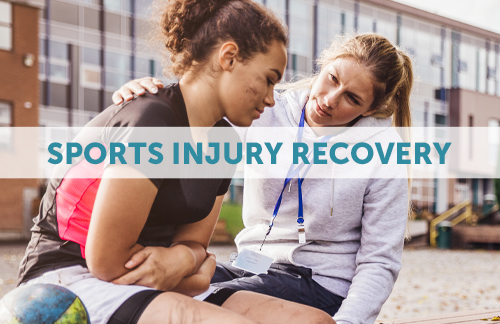
Pediatric Sports Injury Recovery
Expand For More Info
Pediatric sports rehabilitation comes in many forms. Many clinics keep licensed athletic trainers on staff that will go on-site to schools and other sporting events to act as an initial caregiver at the time of an injury.
If an injury occurs, your child may be referred to physical therapy. Physical therapists have a variety of different programs tailored to your child’s sport and specific type of injury, the severity of the injury, and fitness levels.
Common Pediatric Sports Injuries:
Acute Injuries: Caused by a sudden trauma. Examples of trauma include collisions with obstacles on the field or between players. Common acute injuries among young athletes include contusions (bruises), sprains (a partial or complete tear of a ligament), strains (a partial or complete tear of a muscle or tendon), and fractures.
Overuse Injuries: Not all injuries are caused by a single, sudden twist, fall, or collision. Overuse injuries occur gradually over time, when an athletic activity is repeated so often, parts of the body do not have enough time to heal between playing.
Concussions: Mild traumatic brain injuries. They are caused by a blow to the head or body that results in the brain moving rapidly back and forth inside the skull.
Growth Plate Injuries: Growth plates are areas of developing cartilage tissue near the ends of long bones. When a child becomes full-grown, the growth plates harden into solid bone. Because growth plates are the last portion of bones to harden (ossify), they are vulnerable to fracture.

